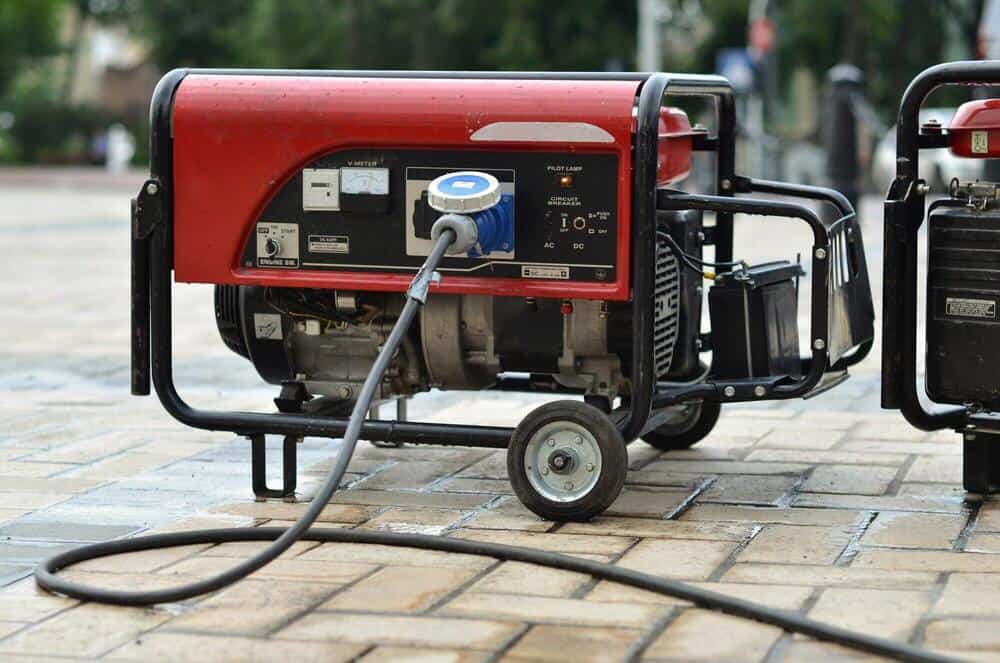Proper generator placement is crucial for both safety and performance. Whether installing a permanent standby unit or positioning a portable generator, following correct placement guidelines can prevent dangerous situations while ensuring optimal operation. Understanding proper maintenance of your portable generator goes hand in hand with proper placement, as accessibility for maintenance tasks significantly influences placement decisions.
Safety Distance Requirements
The most critical safety consideration is maintaining adequate distance from buildings and occupied spaces. The Consumer Product Safety Commission (CPSC) mandates a minimum distance of 20 feet from any building structure. This distance requirement isn’t arbitrary – it’s based on extensive research showing that carbon monoxide concentrations become dangerous at closer distances, particularly when environmental factors like wind and temperature inversions affect gas dispersion.
Generator exhaust must be directed away from doors, windows, and air intakes. Even with proper distance, exhaust gases can enter buildings if directed toward openings. Consider prevailing wind patterns when positioning your generator to ensure exhaust consistently blows away from occupied spaces. This consideration becomes especially important in areas with consistent wind patterns or during seasonal weather changes that might affect air movement around your property.
Location Considerations
A stable, level surface is essential for safe generator operation. Vibration from running generators can cause movement if not adequately secured, potentially creating dangerous situations or damaging the unit. Consider installing a concrete pad or using specialized mounting systems for permanent installations. The surface should be slightly elevated above the surrounding ground level to prevent water accumulation during rain or snow melt.
Accessibility plays a crucial role in both safety and maintenance. The generator location must allow quick access for emergency shutdown situations while providing adequate space for routine maintenance procedures. Clear paths for fuel delivery or refueling are essential, particularly for larger units or during emergencies when quick refueling might be necessary. Sufficient clearance for proper ventilation ensures optimal performance and prevents potentially dangerous heat buildup.
Environmental Protection
While generators need proper ventilation, they also require protection from severe weather conditions that could affect performance or create safety hazards. Consider installing a generator canopy or shelter that provides weather protection while maintaining adequate airflow. These protective structures must be carefully designed to balance weather protection with ventilation requirements, ensuring the generator can operate safely in all weather conditions.
The shelter design should account for local weather patterns, including prevailing winds, typical rainfall amounts, and potential snow accumulation. Proper drainage around the generator location prevents water pooling, which could create electrical hazards or damage the equipment. Elevated platforms or additional drainage measures might be necessary in areas prone to flooding to ensure safe operation during severe weather events.
Installation Specifics
Proximity to your electrical panel affects both installation cost and efficiency, but safety should never be compromised for convenience. Shorter cable runs reduce power loss and installation expenses, but proper safety distances must always be maintained. Professional installation should include careful consideration of transfer switch placement, appropriate cable sizing, and proper routing of all connections.
The installation process must account for future maintenance needs and potential equipment upgrades. Leaving adequate space around the unit for service access can save significant time and expense during routine maintenance or repairs. Cable routing should be planned to protect wiring from physical damage while maintaining accessibility for inspection and replacement.
Carbon Monoxide Safety
Carbon monoxide poses the greatest risk from improper generator placement, requiring careful attention to prevention measures. This odorless, colorless gas can reach lethal concentrations quickly, making proper placement and ventilation crucial for safe operation. Multiple layers of protection, including CO detectors in buildings and careful attention to exhaust direction, help ensure safe operation under all conditions.
Regular monitoring of wind patterns and air movement around the generator location helps identify potential problems before they become dangerous. Seasonal changes in vegetation, new construction, or modifications to nearby structures can affect air movement patterns, requiring periodic reassessment of generator placement safety.
Legal and Code Requirements
Local regulations often govern generator placement, with requirements varying significantly between jurisdictions. These regulations typically address safety concerns, noise limitations, and aesthetic considerations. Understanding and complying with local codes ensures legal operation while maintaining good relationships with neighbors.
Many areas require professional installation and inspection of permanent generator installations, ensuring compliance with safety standards and building codes. Regular updates to these regulations may require modifications to existing installations, making it important to stay informed about changing requirements in your area.
Efficiency Considerations
Proper placement significantly affects generator performance and efficiency. Adequate airflow for cooling prevents performance degradation and extends equipment life, while protection from extreme temperatures ensures reliable operation in all weather conditions. Optimal fuel line routing and efficient power distribution minimize losses and maintain system efficiency.
Regular monitoring of generator performance can help identify placement-related issues before they cause significant problems. Changes in operating temperature, fuel consumption, or noise levels might indicate the need for adjustments to the generator’s location or protective measures.
Conclusion
Safe generator placement requires careful consideration of multiple factors, with safety being paramount. Never compromise on safety distances or ventilation requirements, even if it means less convenient placement. Regular inspection of your generator’s location ensures continued safe operation and optimal performance throughout the equipment’s lifetime.
Remember that proper placement is just the beginning – regular maintenance and careful operation are equally important for safe, reliable generator use. When in doubt, consult with qualified professionals who can ensure your generator installation meets all safety requirements and local regulations while providing optimal performance and reliability for your specific needs.

Leave a Reply